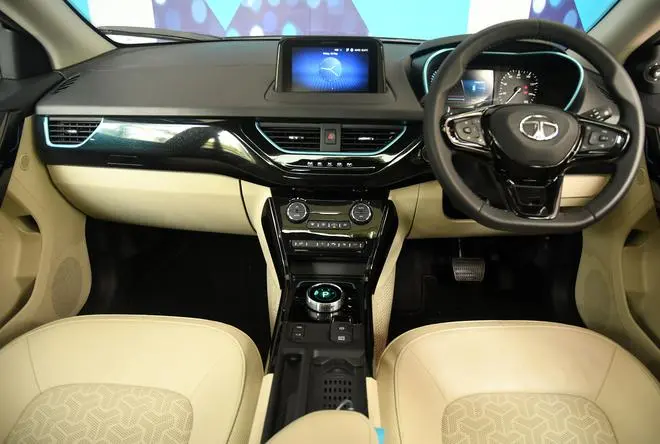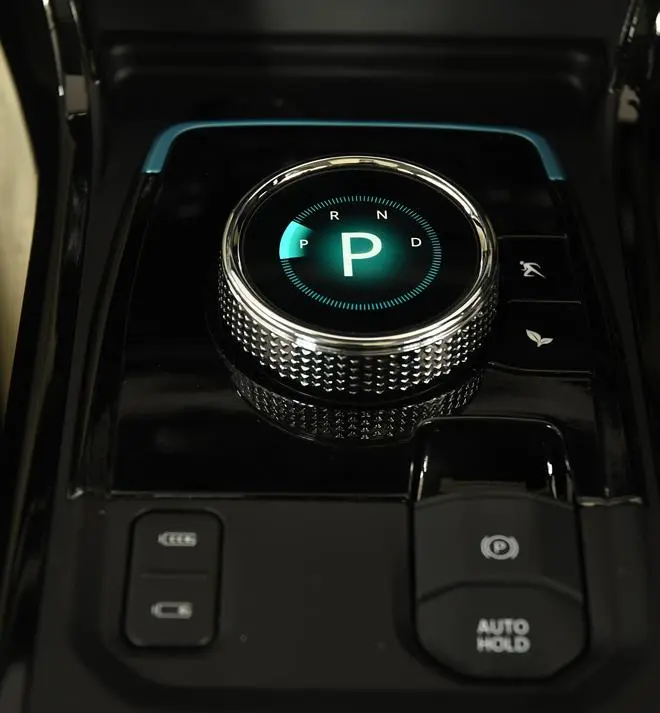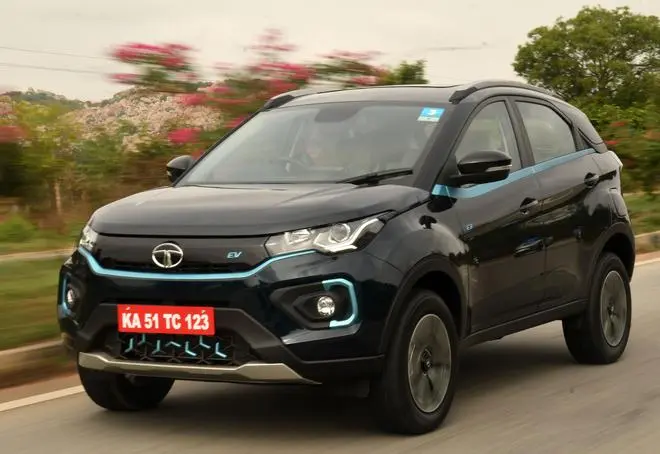The two biggest, interconnected roadblocks for mass adoption of electric vehicles (EVs) are high prices and low battery driving range. Obviously, range anxiety is a real worry for both first-time car buyers and for those that hope to make their primary vehicle an EV. This will continue to be so even though EV buyers have shown lower price-sensitivity in recent months across categories and price ranges. It is not a simple arithmetic progression between size of the battery and the driving range, because incremental weight and other operating factors also affect the range. However, it could be a relatively predictable progression between battery size and cost of the vehicle. So, mass market EVs will have to face up to this balancing act between affordable pricing and offering practical battery range.
One of the best-selling EVs in the market today is the Tata Nexon EV. Despite its middling real world driving range, this has still managed a large following and together with the Tata Tigor EV, it had a share of 96 per cent of the total PV EV market as of March 2022. The Nexon EV is a practical, everyday EV that delivers a real-world driving range of between 200 to 250 km per charge depending on driving style and traffic conditions. What if that range could get a 50 per cent boost? That is exactly what Tata Motors has done by launching the new Nexon EV Max. I test drove the new extended range model in Bengaluru last week and here are my first impressions.
More than just range
The Nexon EV Max’s primary focus is improving driving range and drivability. And the target audience is still the average EV buyer, but one who has a fatter purse. Nexon’s design is still fresh and distinctive, and in fact, the current Nexon EV will continue to be available in the market alongside the new Nexon EV Max. The crossover flavour of the design, while still giving it a strong, raised SUV stance, makes the Nexon ideal for adapting to include an EV powertrain. The transparent tail-lamps with their LED tubes, inspired by the tri-arrow design, the peeled-back headlamps with their LED DRL signatures and the blue metallic accents all around the car makes the Nexon EV stand out. Tata designers have simply decided to carryover all of these without any changes.
So, the Nexon EV Max is identical to the current one; there’s not even going to be a ‘Max’ badge on the tailgate to identify it. The signature navy blue paint job gets a darker shade (Tata calls the new shade Intensi-Teal) and it gets a dual-tone contrast roof finish. Someone with a keen eye can see that the Nexon EV Max sits a bit lower than the regular Nexon EV (15mm lower, a ground clearance of 190mm) and the 16-inch alloy wheels are different. The new extended range model is otherwise identical to the regular Nexon EV in terms of external dimensions too. But one parameter has, of course, changed - the kerb weight is now about 100 kg more at 1,500 kg. About 70 kg of that increase is due to the larger 40.5kW battery pack. This is about a third larger in capacity to the regular Nexon EV’s 30.2kW pack and that additional 10kW has led to the jump in kerb weight, with the remaining increase being due to the added new features. The battery itself continues to be the same Lithium-ion polymer chemistry from the current model.
Cabin
The new Nexon EV Max’s cabin is also very similar to the regular EV model. The layout, dashboard design and panels themselves remain the same overall. But there are small differences, and these are the details that really catch my eye. The classily finished rotary selector knob taking up all the attention in the centre console is one of them. Finished in stainless steel with a geometric pattern that allows better grip, the selector sports a digital screen in the centre that displays the vehicle position - P, R, N or D. In addition to the electronic parking brake, there is an auto hold function that is useful on inclines. The selector also changes colour based on the driving mode selected, of which there are three - Eco, City and Sport. The City driving mode is the default mode every time one starts the Nexon EV Max. There is a noticeable restriction in throttle response in Eco mode and a boost in power delivery in Sport mode.

While the dashboard panels remain familiar in design, the IP gets a new finish and tri-arrow inspired self-design that is subtle and sophisticated. The centre console sees a few changes with the addition of a wireless charging pad right next to driver’s seat and just below the armrest. Unlike the regular model, the Nexon EV Max also gets four regenerative braking modes. The regen mode buttons are on the centre console with a simple representation of the increase and decrease in levels. The EV Max gets ventilated front seats and a slightly different upholstery. The rest of the cabin is almost identical to the regular Nexon EV. The only other noticeable difference in the interior was the slightly higher floor for the cabin at the rear, caused by the larger battery pack. It is still sufficiently spacious for three occupants at the rear. The luggage space in the boot remains the same 350-litres. The Nexon EV Max also gets eight more features for its ZConnect app-based connected car tech.

Performance
The new Tata Nexon EV Max sports a slightly more powerful AC electric motor that generates 143PS of peak power and 250Nm of torque. The regular Nexon EV’s electric drivetrain delivers 125PS and 245Nm. The EV Max is quicker than the regular, but only shaves less than a second off the latter’s 0-100kmph time. There is the addition of the Eco mode in the Nexon EV Max that enables one to extend the 40.5kW battery pack’s range, since power and torque gets limited to about two-thirds of the peak generated (in Sport mode). The larger battery definitely helps the new model deliver a higher range. My test mule’s digital instrument cluster displayed a range of about 338km at a charge level of 99 per cent; the calculation must’ve been based on previous driving cycle. After a half day of driving, mostly in City and Sports mode, covering a distance of about 180 km, the Nexon EV Max still had a range of 82 km with the SOC (state of charge) being 38 per cent. The rated range according to Tata Motors is 437 km on a full charge. If you were to switch off the aircon, or drive longer on Eco mode, use regen braking or avoid long idling times, it should be possible to get a range that is closer to 300 km per charge.

Of the four selectable regen modes, zero basically allows the car to coast and there is no return of charge to the battery. Regen levels 1 to 3 is an ascending order of brake energy recuperation and it should be possible to drive the Nexon EV Max with just throttle input and preemptive regen braking while in slow moving traffic. While the extra 100 kilos of battery weight affects the range, it doesn’t affect the ride quality. The suspension setting has been tweaked with changes to the springs and dampers, making the ride a tad firmer. But overall, the ride quality remains very much like it was in the regular Nexon EV. The new extended range model however, gets the addition of electronic stability, a version of brake boost and disc brakes at the rear to improve braking efficiency.
Bottom Line
The Nexon EV Max is a more complete package compared to the current model. The extended battery range is welcome, as are the changes to the cabin, which add the key element of premiumness and perceived quality. Even though the electric drivetrain’s performance is not powerful enough to pin you back into the seat, in sport mode it is quick enough to let you have some fun. The lower centre of gravity and instant torque gives the Nexon EV Max some inherent advantages while cornering, while its straight-line stability remains good.

The Nexon EV Max is being offered in two variants - XZ+ and XZ+ Lux, but you will also have the option of buying it with the standard 3.3kW charger or a 7.2kW AC fast charger that can give you a full charge in 6.5 hours. For an additional Rs 50,000, the fast charger will be installed at your residence or work place. The XZ+ variant is priced at Rs 17.74 lakh and the XZ+ Lux variant at Rs 18.74 lakh.





Comments
Comments have to be in English, and in full sentences. They cannot be abusive or personal. Please abide by our community guidelines for posting your comments.
We have migrated to a new commenting platform. If you are already a registered user of TheHindu Businessline and logged in, you may continue to engage with our articles. If you do not have an account please register and login to post comments. Users can access their older comments by logging into their accounts on Vuukle.